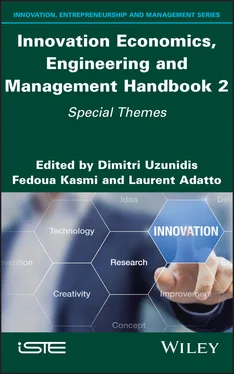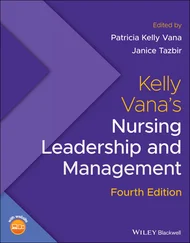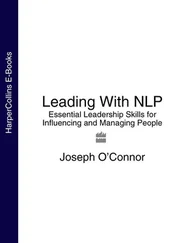1 Cover
2 Title Page
3 Copyright First published 2021 in Great Britain and the United States by ISTE Ltd and John Wiley & Sons, Inc. Apart from any fair dealing for the purposes of research or private study, or criticism or review, as permitted under the Copyright, Designs and Patents Act 1988, this publication may only be reproduced, stored or transmitted, in any form or by any means, with the prior permission in writing of the publishers, or in the case of reprographic reproduction in accordance with the terms and licenses issued by the CLA. Enquiries concerning reproduction outside these terms should be sent to the publishers at the undermentioned address: ISTE Ltd 27-37 St George’s Road London SW19 4EU UK www.iste.co.uk John Wiley & Sons, Inc. 111 River Street Hoboken, NJ 07030 USA www.wiley.com © ISTE Ltd 2021 The rights of Dimitri Uzunidis, Fedoua Kasmi and Laurent Adatto to be identified as the authors of this work have been asserted by them in accordance with the Copyright, Designs and Patents Act 1988. Library of Congress Control Number: 2021932860 British Library Cataloguing-in-Publication Data A CIP record for this book is available from the British Library ISBN 978-1-78630-701-9
4 Introduction: General Presentation
5 1 Meaning – The Meaning of Innovation: Theoretical and Practical Perspectives
1.1. Introduction 1.2. Conceptions of the meaning of innovation over time 1.3. When innovation, like the phoenix, rises from the ashes 1.4. In search of lost meaning 1.5. The PSI approach: a philosophy of, and for, action 1.6. By way of conclusion 1.7. References
6 2 Engineering – Innovation Engineering: A Holistic and Operational Approach to the Innovation Process2.1. Introduction 2.2. Innovation engineering: a field of research that has struggled to structure itself in France 2.3. Practical guide to innovation engineering 2.4. Conclusion 2.5. Acknowledgments 2.6. References
7 3 Absorption – Technological Absorptive Capacity and Innovation: The Primacy of Knowledge3.1. Introduction 3.2. Technological absorptive capacity: a cognitive process 3.3. The multidimensional nature of absorption capacity and innovation 3.4. Measuring absorptive capacity 3.5. Conclusion 3.6. References
8 4 Big Data – Artificial Intelligence and Innovation: The Big Data Issue4.1. Introduction 4.2. Humans and data: diversity and consensus 4.3. Big Data: an interdisciplinary approach to technology and its uses 4.4. A wide range of applications: promises and fears 4.5. Conclusion 4.6. References
9 5 Blockchain – Blockchain and Co-creation within Management Methods5.1. Introduction 5.2. The interest of Blockchain in the field of immaterial exchanges 5.3. The limits of the co-creation process 5.4. Blockchain in mobilizing and organizing co-creation processes 5.5. The promises of Blockchain 5.6. Conclusion 5.7. References
10 6 Bricolage – From Improvisation to Innovation: The Key Role of “Bricolage”6.1. Introduction 6.2. Bricolage: new concept, old practice 6.3. Current application of the bricolage concept 6.4. Bricolage and improvisation 6.5. Bricolage and frugal innovation 6.6. Conclusion 6.7. References
11 7 Circularity – The Circular Economy as an Innovative Process7.1. Introduction 7.2. The circular economy: a transformative concept 7.3. The circular economy as a source of innovation 7.4. Conclusion 7.5. References
12 8 Co-creation – Co-creation and Innovation: Strategic Issues for the Company8.1. Introduction 8.2. Co-creation: a strategic challenge for companies 8.3. Co-creation, DIY and DIWO 8.4. Co-creation, creativity and innovation 8.5. Co-creation and intellectual property rights 8.6. Co-creation and eco-design 8.7. Conclusion 8.8. References
13 9 Community – Innovative Communities of Practice: What are the Conditions for Implementation and Innovation?9.1. Introduction: communities of practice and innovation 9.2. Communities of practices, a definition: group cohesion, complicity and dynamism 9.3. Work teams and virtual communities 9.4. Organizational learning 9.5. Animation role 9.6. Conclusion 9.7. References
14 10 Craftsman – The Innovative Craftsman: A Historically Permanent Socio-economic Function10.1. Introduction 10.2. The craftsman, an ignored innovator 10.3. The innovative craftsman of the 21st century 10.4. Conclusion 10.5. References
15 11 Defense – Military Innovation: Networks and Dual-use Technological Development11.1. Introduction 11.2. Military innovation: main attributes 11.3. Conclusion 11.4. References
16 12 Design Thinking – Design Thinking and Strategic Management of Innovation12.1. Introduction 12.2. The origins of design thinking 12.3. Design thinking in innovation management 12.4. Conclusion 12.5. References
17 13 Digital – Digital Entrepreneurship as Innovative Entrepreneurship13.1. Introduction 13.2. Definition and characteristics of digital entrepreneurship 13.3. Digital entrepreneurship in the field of innovation studies 13.4. Conclusion 13.5. References
18 14 Entrepreneurship – Social Innovative Entrepreneurship: An Integrated Multi-level Model14.1. Introduction 14.2. State-of-the-art: contemporary issues, approaches and levels of analysis 14.3. Integrated multi-level model of innovative social entrepreneurship 14.4. Conclusion 14.5. References
19 15 Fintech – Technology in Finance: Strategic Risks and Challenges15.1. Introduction 15.2. Evolution of technology in finance 15.3. Risks of fintech 15.4. Concluding remarks 15.5. References
20 16 Gerontech – Geront’innovations and the Silver Economy16.1. Introduction 16.2. The Silver Economy: a new area for innovation 16.3. “Gerontechnologies”: the technological dimension of innovations in the Silver Economy 16.4. Towards “geront’innovation” 16.5. Conclusion 16.6. References
21 17 Greentech – Contributions and Limitations to the Environmental Transition17.1. Introduction 17.2. Green technologies, the first technological response to the environmental crisis 17.3. From green technologies to a sustainable technological and socio-economic system 17.4. References
22 18 Hacker – Hackerspace as a Space for Creative Exploration18.1. Introduction 18.2. The rise of hacker culture 18.3. Cybercrime or creative exploration? 18.4. Conclusion 18.5. References
23 19 Health – Telemedicine: Decentralized Medical Innovation19.1. Introduction 19.2. Information technology at the service of medical care 19.3. High-performance medical devices 19.4. Conclusion 19.5. References
24 20 Intellectual Corpus – Inventive Intellectual Corpus: Knowledge-based innovation20.1. Introduction 20.2. Concept of knowledge-based innovation 20.3. Modeling knowledge creation 20.4. Activation of the chaotic inspiration model of knowledge evolution by emergence using the ICAROS® method 20.5. Conclusion 20.6. References
25 21 Imagination – Imagination, Science Fiction, Creativity and Innovation: An Integrated Process21.1. Introduction 21.2. Tame the imagination in order to innovate 21.3. Imagination: from creativity to innovation 21.4. Conclusion 21.5. References
26 22 Marketing – Marketing of Innovation and University–Industry Collaboration22.1. Introduction 22.2. Innovation marketing and inter-organizational collaboration 22.3. The cross-functionality of innovation marketing 22.4. Conclusion 22.5. References
27 23 Milieu – Innovative Milieu: The Strength of Proximity Ties23.1. Introduction 23.2. Definition and characteristics of an innovative milieu 23.3. Proximity and territorialized innovation networks 23.4. Conclusion 23.5. References
28 24 Nanotech – Nanotechnologies: The Future of Innovations24.1. Introduction 24.2. Nanotechnology applications 24.3. RFID chips 24.4. Global potential risks 24.5. Conclusion and outlook 24.6. References 24.7. Webography
Читать дальше












